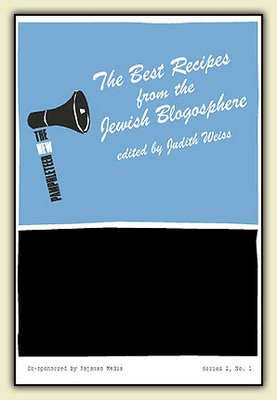(For Part One, visit the archives.)
It’s September and the change of seasons is beginning to make itself felt in our part of the world. Daytime temps are still mostly in the 80’s, but after Ivan’s passage, we’ve had several days of gorgeous blue skies and cool mornings. Cool, here, is defined as anything under 60°. This morning it was 59° - almost brisk!
With the shift in the weather, we have the fall holiday season. Time to trot out all the traditional dishes. And what could be more traditional than beef brisket, cooked Jewish style?
Saveur magazine recently ran a piece about beef brisket. The thrust of the article was that there are two kinds of people who really know how to cook a brisket: Texans and European Jews. Texans will typically make a smoked brisket - dry-rubbed with spices and slow-cooked over mesquite or hickory - the classic Texas barbecue. Jews will take that same piece of meat and braise it. The two styles are dramatically different, but each is superb in its own way. And I have the best of both worlds, because She Who Must Be Obeyed is that most rara of avises, a Jewish Texan.
I learned how to make a real Texas-style brisket from my late father-in-law. How to prepare the dry spice rub. How to season the meat. How to smoke it - slowly, carefully. And to this day I’ll put his brisket up against anybody else’s. Even you, Jim Goode. But this is the time of year for the other kind of brisket.
There are hundreds of ways to make a Jewish-style brisket. An old standby is to braise the meat in Coca-Cola blended with Lipton’s powdered onion soup mix (She Who Must Be Obeyed swears by this one). But ever since I tried the following recipe, I see no point in making it any other way - it’s that good.
Lil Pachter’s Braised Brisket (adapted from Saveur magazine, April 2004)
5-7 lb beef brisket, trimmed of some of its fat
1 tbsp kosher salt
1 tbsp sweet paprika
1 tbsp freshly ground pepper
1 tsp dried oregano (or 1 tbsp chopped fresh oregano, even better)
3 cloves garlic, chopped
3 medium yellow onions, sliced
2 bay leaves
3½ cups chicken stock or broth
1 28 oz can diced or chopped tomatoes
2 tbsp vegetable oil
Preheat oven to 350°.
Combine the salt, pepper, paprika, and oregano in a small bowl and sprinkle generously over the meat, rubbing it in well.
In a large, heavy pan with a close-fitting lid, heat the oil over medium-high heat and brown the meat, about 10 minutes on each side. Remove the meat and place on a platter to hold. Pour the excess grease out of the pan and add the chicken broth, tomatoes, and bay leaves, stirring and scraping to deglaze the pan. Put the meat back in the pan and smother with the chopped garlic and sliced onions. (If you're using fresh oregano, which I recommend, it doesn’t hurt to throw another small handful in at this point.) Cover the pan and put it in the oven to braise for 1 hour.
After an hour, remove the cover from the pan and continue to braise another hour.
Push the onions and garlic into the braising liquid and cover the pan. Braise for 1 or 2 more hours - however long it takes to make the meat nice and tender. After one hour, check the meat for doneness by sticking it with a fork - when it’s done, take it out.
You can serve the meat right away, but for best flavor, let cool, refrigerate, and let it sit 1-2 days. This also makes it easy to scrape off any excess grease. Reheat thoroughly in a 350° oven. Remove the meat from the braising liquid, slice against the grain, and arrange on a platter. The braising liquid should, at this point, have cooked down to a nice sauce-like consistency. If it’s too thin, put the pan on the stove on medium-high heat and reduce the liquid to the desired thickness. Remove the bay leaves and spoon the sauce liberally over the meat.
..........
I made about 24 pounds of this stuff for one of our Men’s Club functions a few weeks ago, and it was a huge success. Tragically enough, though, there were leftovers, and something had to be done with ’em. So of course I packed up a couple of pounds of meat and sauce “to go.” Stuck it in the freezer and thawed it out for Rosh Hashanah dinner. Mmmmmm, boy.
And still there were leftovers. So I did what any serious gourmand would do: I made Brisket Pot Pie.
I took two tablespoons of flour and two tablespoons of oil in a saucepan on medium-high heat, stirred and scraped continuously for about 5 minutes to make a light-brown roux. Then I hacked up the remaining brisket into little bite-size nuggets, threw it in the pan with the rest of the tomato-onion sauce, added a couple of diced carrots and a package of frozen green peas with pearl onions. (Yeah, I know, I could have used fresh peas and onions, but to blanch and peel the onions would have been a major PIA, and we wanted to eat sometime before 10 p.m. Tough toenails, bub.) Brought all this to a nice bubbly simmer.
Meanwhile, I’d been preheating the oven to 400°. Using another lazy-ass shortcut, I had elected to use a prepared pie crust rather than make my own from scratch. So sue me. Unrolled one crust into a 9-inch deep dish ceramic pie pan. Then dumped in the hot brisket stew. Then unrolled the top crust onto the pie, sealed and crimped the edges, cut a few slits in the top, and shoved the whole mess into the oven. After 40 minutes it was nice and golden brown, so out it came.
And, ooooh, boy, was that one damn fine, tasty pie. Between me and She Who Must Be Obeyed, we demolished a goodly amount of that bad boy. Just enough “remains of the day” for a pleasant lunch.
Hmmm... is it noon yet?
Subscribe to:
Post Comments (Atom)




















1 comment:
The braised brisket sounds good! Will have to try that, if I can pry the barbecue tongs out of my man's fingers! There is another reason Texans smoke it out on the grill, just too damn hot in the summertime to turn on the oven in the house. I sometimes soak the rubbed meat overnight in a little bath of Shiner Boch. Hmmm, hmmm.
Post a Comment